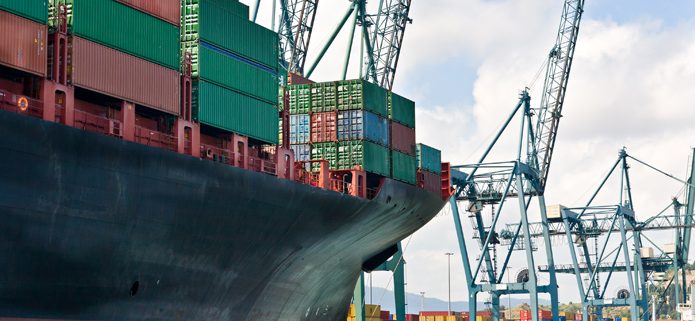The trade agreement between the EU and Canada increases Spanish exports
Since its entry into force on September 21, 2017, the agreement has offered new opportunities to all EU companies, particularly small and medium-sized companies. In addition to the costs that tariffs pose for SMEs, small and medium-sized enterprises often have much more difficulties than large ones in dealing with bureaucratic barriers and other non-tariff barriers that reduce their competitiveness or make their access to new markets be profitable With the CETA, small businesses save time and money, avoiding, for example, the duplication of testing requirements for products, cumbersome customs procedures and expensive court fees.
CETA has also created new opportunities for farmers and producers of a wide variety of European food products, including cheese, wine and alcoholic beverages, fruit and vegetables and processed products. In addition, the Agreement has protected, for the first time in the North American market, almost 150 “geographical indications” of the EU marketed in Canada, including some traditional Spanish specialties, such as Manchego cheese or Teruel ham.
Below are some examples of Spanish companies and economic sectors that, over the past year, took advantage of the opportunities offered by CETA, increasing their exports and contributing to the creation of employment.
Spanish Federation of Food and Beverage Industries (FIAB)
Compared to 2016, the volume of activity of the sector in Canada increased by almost 18% in 2017. This trend continued during the first half of 2018, with an increase of 8.35% compared to the first half of 2017. This means that the growth of exports of the sector to Canada since the entry into force of the CETA is as high as the growth of the sector during the previous decade.
According to the Director General of the FIAB, Mauricio García de Quevedo, the prospects for the application of the CETA in the future are even better: “The CETA has opened new opportunities for Spanish companies, by reducing tariffs and non-tariff barriers to trade and to the investment. The food and beverage industry is undoubtedly among the sectors that benefit most from the agreement, as the first data clearly show ».
Spanish toy industry (AEFJ)
The entry into force of the CETA has had three main consequences for the Spanish toy industry:
First, comparing the results of the first six months of 2017 with those of 2018, the export figures from Spain to Canada have increased considerably, by 20%.
The second direct consequence of CETA has been that producers are reviewing their commercial strategies for Canada. Antonio Giner, Director of Foreign Trade of the Spanish Association of Toy Manufacturers (AEFJ) explains the reason: “The producers who had previously channeled parts of their products to Canada directly from production sites outside of Europe (for example, China), They are starting to do it through Spain, due to the advantages of the CETA: not only for the lower tariffs, but also for the reduction of bureaucratic obstacles and for the advances in the mutual recognition of norms and standards. Working from Spain now offers competitive advantages. ”
Finally, more and more companies in the toy sector are using Canada as a center of operations and entry point for the re-export of their products to the United States, the world’s largest toy market.
Spanish Wine Federation (FEV)
Spanish wine exports are also achieving good results in the context of the CETA. While, overall, Canadian wine imports in the first half of 2018 have remained (compared to the same period of 2017) practically stable in volume and have increased by 5.5% in value, wine imports Spaniards have increased considerably more: 17.4% in volume and 11% in value. Sparkling wines take the cake
With an annual volume of more than 37 million liters of wine worth more than 100 million euros, Spanish wine has consolidated its position as the fifth leading supplier of foreign wines in Canada, behind only France, Italy, United States and Australia.
“Canada is a priority market for the Spanish wine sector and our challenge is to adapt the increases in the volume of exports to increases in value. The Spanish wine sector also expects additional short-term benefits from the continuous and supervised implementation of CETA. In addition to the elimination of tariffs and the consolidation of the protection of geographical indications, we hope that, within the framework of regulatory cooperation, a series of trade barriers and discriminatory treatment of the Canadian provinces will be addressed in the coming months. Europeans “, says José Luis Benítez, General Director of the FEV.
Winery Aranléon
Aranleón, a Valencian winery of the geographical indications of Valencia and Utiel-Requena, exports a quarter of its products to Canada; a market with a growing demand for organic wines. In fact, in 2015 Aranleón was the largest seller of organic wine in the province of Quebec, with a total of 100,000 bottles sold.
The export activity of Aranleón has fostered local employment and the preservation of an economic activity rooted in the region and respectful of the environment, and has also allowed the area of viticultural cultivation to increase.
In addition, these exports have facilitated the geographical indications Utiel-Requena and Valencia have become destinations for wine tourism.
The advantages derived from EU trade agreements have allowed many Spanish wineries to gain a competitive advantage in international markets, even against producers with more aggressive commercial strategies. In the same way, these agreements have reduced barriers to entry in countries where the State exercises greater control over alcoholic beverages, such as Canada or Switzerland, a country with which the European Union also has an agreement that facilitates the entry of the wines of the EU.
Porcelanosa Group
The implementation of CETA has allowed the large ceramic and interior design company Porcelanosa Group based in Vila-real (Castellón) to reinforce its commitment to the Canadian architecture and interior design sector. Several factors have made this possible: first, customs duties have been eliminated, making their products more competitive in the Canadian market. Second, the Porcelanosa Group has benefited from advantageous export conditions for EU companies thanks to the CETA framework, which has led to a substantial opening of the Canadian market, including its large public procurement market at the federal level and state. Finally, the new CETA conditions facilitate investments and the development of new industries and products.
As a result, the Porcelanosa Group has improved its prices and competitiveness and increased its Canadian investments, particularly in Toronto, one of the largest metropolitan areas in North America. This expansion has allowed, on the one hand, to increase the number of stores – with the opening of another retail store on the exclusive Caledonia Road in November 2018 – and, on the other, to increase the hiring of new personnel. Other major showrooms in the country are in Ontario and Calgary.
In general, the volume of business in the Canadian market has increased and, after reaching more than 3 million euros in 2017, has a positive trend in 2018.
“We have high hopes in the Canadian market. The best example is that we will open a new store in November in one of the most exclusive shopping areas in Toronto. CETA has allowed us to improve our prices and increase our competitiveness. This trade agreement has reduced the bureaucratic pressure on EU products. In short, for the operations of Porcelanosa in Canada, the agreement is very favorable, “says Silvestre Segarra Soriano, Export Director of Porcelanosa Group.
Spanish fruit and vegetable sector (FEPEX)
The impact of CETA on the Spanish fruit and vegetable sector during the first year of its application has been impressive, with export volumes that have increased close to 90% during the first half of 2018, reaching sales of more than 40 million euros. Total exports of 2018 could reach more than 100 million euros, compared to exports of 2017, which amounted to 57 million euros.
In volume, the most exported products were citrus, cabbage, garlic, onion and pepper.
Finally, the largest increases in the first semester of 2018 (compared to the first half of 2017 without CETA), were recorded in: frozen fruits and nuts (ten times more); fresh grapes or raisins (six times more); dates, figs, pineapples, avocados, guavas, mangoes and mangosteens (+ 179%); melons (+ 147%); and citrus (+ 113%).
Hiperbaric
The revenues of the world’s leading manufacturer of High Pressure Processing (HPP) equipment for the food industry come in 90% of foreign markets. The company, which employs about 100 people in the province of Burgos, has experienced sustained growth in recent years thanks to sales abroad. Their machines work all over the world and North America is their main market.
One of the main advantages that CETA brings to Hiperbaric is linked to its after-sales services, since the agreement facilitates the European workers of the company to enter Canada and the installation and maintenance of the equipment. This makes their products more attractive to potential customers.
Carole Tonello, commercial and applications director of Hiperbaric: «CETA makes us more competitive in Canada, facilitates our expansion in the Canadian market and allows us to compete with our main rival, an American multinational. Trade agreements are good for smaller companies, like ours, because we can compete on equal terms with big companies that have more resources to overcome barriers and access foreign markets. ”







